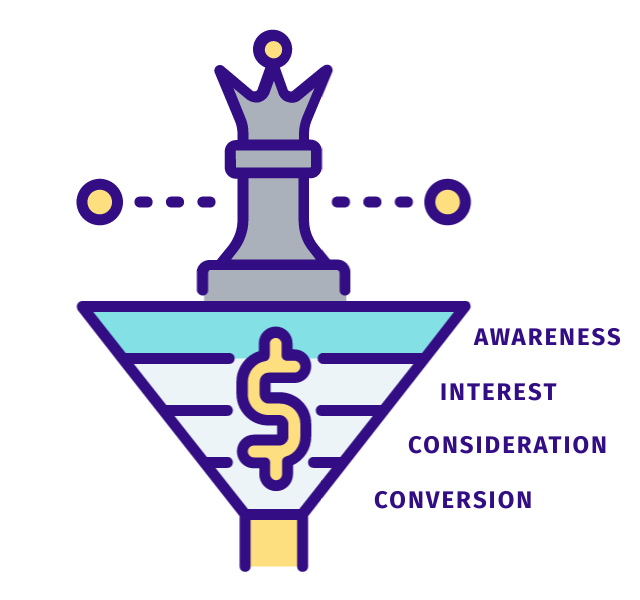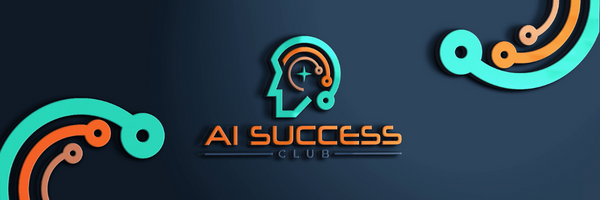A holistic search engine optimization (SEO) strategy can help businesses understand their customers’ journey to purchase and guide them through each stage of the conversion funnel.
In addition to aligning your content with your searchers’ needs, good SEO makes your site intuitive and easily navigable, and it creates a foundation for site visitors to interact with your site and move through your conversion funnel. Because of this, SEO not only attracts visitors at every phase in your conversion funnel, but it impacts every visitor to your site, regardless of how they discovered your brand.
Here’s how optimizing content for searching journeys in each phase, from initial awareness to final conversion, attracts more organic traffic and boosts conversions.
SEO Attracts Visitors at Every Phase in the Conversion Funnel

SEO makes your site findable to the right users at the right moment, but only if you have an effective content strategy. Holistic SEOs do this by studying how your searchers become buyers and optimizing the content on your site for users in every stage of that path.
Optimization for organic search is another way to effectively grab those valuable upper funnel searchers and users at every phase in the conversion path with a one-time investment in content strategy and evergreen content creation.
Step 1: Awareness
Awareness of your brand is the first phase of the conversion funnel. Let’s assume we are working on an SEO strategy for a portable self-storage moving company.
When Mary, our potential customer, starts thinking about moving across the country, she needs to figure out the logistics of her big move. She turns to Google for suggestions and types “help moving” into the search bar.
This query can be answered in a variety of ways. Rental moving trucks, professional moving services, and hourly movers could all be solutions to Mary’s general task of finding help for her move. Our fictional business can use this general query as an opportunity to make Mary aware of their solution.
A holistic approach to SEO would ensure this site had a dedicated landing page educating those who need “help moving” about their flexible storage and moving containers. This page would be optimized for keywords that reflect this search journey.
Mary is now aware of the existence of portable self-storage and moving containers. That landing page would also offer an intuitive funnel users can follow to learn more about storage and moving containers as visitors like Mary move down the conversion funnel into the interest phase.
To better understand how to create your beginning of the funnel, consider asking ChatGPT along with an AI tool like Keywords Everywhere, for example:
“My main keyword is [KEYWORD]. Which keywords should I be
focussing on to attract people who are just researching
options at the very start of their searching journey?”Step 2: Interest
Mary is now aware of portable self-storage as one solution to her task of moving. But there are still questions about what portable self-storage and moving containers would mean for her move. Mary again turns to Google to learn more. “Moving containers” may be her query this time as she enters the interest stage in our conversion funnel. The customer is aware of the offering but wants to know more.
Holistic SEO ensures that our site is optimized for searchers in this next phase of the funnel by offering information about what moving containers are and how they work.
Questions like: “How much do they cost?”; “What sizes are available?”; “How long can I use them?” or “How quickly can they be transported?”, could all be answered on a landing page for the interested visitor. Users in the interest phase should also have content from the next phase in your conversion funnel clearly laid out for them when they are ready to move from interest to consideration. Use email marketing to engage users who are not yet ready to move down your conversion funnel.
For this optimization strategy, consider using the following prompt:
“My main keyword is [KEYWORD]. Which questions should I
answer throughout my site to inform my target customers
that this may be the best solution for them.”Step 3: Consideration
At this step, the customer wants a particular brand or product. Mary loves the idea of portable moving containers but isn’t sure which brand will best meet her needs. “Compare portable storage containers” may be our query this time. Mary knows portable storage containers will be her solution. She wants to find the best deal though and she’s using search engines to point her to options she can compare as she gets close to making her purchase decision.
During this phase, your site needs to be optimized to communicate your unique value proposition. Are you convincing visitors through your content that your offering is the clear choice for your potential customers?
When you’ve outlined the benefits of choosing your company and offering, encourage your visitor to make the final move to conversion with an intuitive path laid out for your visitor. At this stage, a well-optimized digital business card is important to consolidate your brand-driven assets.
Here, consider a prompt like this:
“My business is [DESCRIBE WHAT YOU DO HERE]. My main
competitors are [COMPETITORS]. How can I convince my
customers that my business is the best option for them?”Step 4: Conversion
Mary has done all of the groundwork; she’s ready to convert! The decision is made. Mary is ready to purchase but can’t remember the domain and wants to skip navigating through the site. “Brand name moving containers” is the query this time. She just wants to be connected with our key landing page, which is set up for conversions.
With holistic SEO, you’ve ensured this page exists and meets the expectations of your soon-to-be buyer. It should include the information Mary needs about her portable storage container like size, price, and transportation. It should also have a streamlined checkout process to make sure converting is as simple and intuitive as possible.
At this point, prompt AI on how to use your CTAs,
identify what your landing page is missing, and how
you can improve your conversions. Holistic SEO Pushes Users Further Down Your Funnel
SEO doesn’t just attract people from organic search at every step in the conversion funnel; it also pushes people down it. Holistic SEO isn’t just about aligning content with queries. It’s also about optimizing the user’s experience on your site. It’s about making your site intuitive and useful so that it will drive conversion.
Users who land on your site to learn more about your general industry should find an answer to their questions. They should also find why your solution meets their specific needs, why your solution is the best for them, and where they can take advantage of this great solution. Good SEO turns “awareness” into “interest” or even “conversion.”
SEO Touches Visitors from All Sources and in All Phases of Your Conversion Funnel
SEO touches all site visitors, regardless of the source or phase in your conversion funnel. Because of your SEO efforts, visitors who find your site through a display ad in the “consideration” phase have the perfect landing page to express your unique value proposition and move them seamlessly to the “conversion” stage.
“Interested” users who look for your brand after seeing a TV ad have content to answer their questions about your product as well as the facts about your company and the path laid out for them to move further down that conversion funnel.
Social media visitors who are just starting to learn about your industry in the “awareness” stage can find the information they need to move down to the “interest” or “consideration” phase and compare your offering to your competitors. The content and path alignment created through holistic SEO makes purchasing easy and intuitive for ALL your site visitors, regardless of source or phase in the conversion funnel.
Most brands invest in SEO because organic search drives relevant traffic and revenue to their site. Holistic SEO does more than just improve a site’s performance in organic search. It lays the foundation for all online touches with your brand by aligning your site’s content with what your unique users are looking for. Holistic SEO also boosts the performance of your entire marketing program by optimizing content for each stage of the conversion funnel, resulting in overall improved traffic, revenue, and conversion rate.
Key Takeaways:
- Holistic SEO involves studying how searchers become customers and tailoring content to users in each stage of that journey – awareness, interest, consideration, and conversion. This captures more upper-funnel searchers and leads them further down the path to purchase.
- Aligning site content to searchers’ evolving needs makes a site more intuitive and usable. SEO not only brings in relevant organic visitors, but it also helps push them through the conversion funnel.
- Good SEO benefits all site visitors regardless of source. By creating useful, tailored content and conversion paths, holistic SEO boosts the performance of overall marketing efforts – more traffic, revenue, and conversions.
In summary, holistic SEO goes beyond driving organic traffic to lay the groundwork for guiding users seamlessly through the purchase process. It boosts marketing results by optimizing the entire customer experience.
Say Hello to Smarter, Faster, More Effective Content Creation!
Join the Club! 👇

Blog cover image: Unsplash+ In collaboration with Spenser Sembrat
*Some or all links on this page may be affiliate links, which means I may receive a commission if you make any purchases based on my recommendations.
These visitor conversion tips seem helpful!
Thanks for the article!
I found this a helpful and refreshing approach to SEO, and it made total sense to break down the way we think about SEO to the needs and wants of the prospect at each stage. Thank you!
Wow – what great prompt suggestions to use AI for SEO. Thank you Ann and Denise for sharing!
Thank you for your feedback, Jan!
Thank you so much for having me, Denise!
This is a well thought out way to use your content to get traffic. Not just traffic but traffic that converts into paying customers. Thank you for the plan. Now I must figure out how to use it.
Hi Lorenzo, I’ve been thinking about your comment and about how to use this plan that Ann Smarty laid out.
I would start “with the end in mind”. What are you visitors looking for and what’s the path you want to take them on? Then, what’s the outcome YOU want and see where that intersects.
What questions can you answer so you stay top of mind when the visitor needs the solution you offer?
Your articles and information are always helpful – thanks so much Denise
Thanks for stopping by, Alyse! This one is all Ann Smarty, along with my suggestion to add some sample AI prompts!
Really appreciate this article as I’m about to overhaul my website! Love the AI Prompts you give as well. Keeping.
Thanks for stopping by, Judy. This is a good model when you redesign your site, to plot the path you want your visitors to take, especially since you’re multi-talented and have so much to offer.
Thanks for your awesome feedback, Judy!